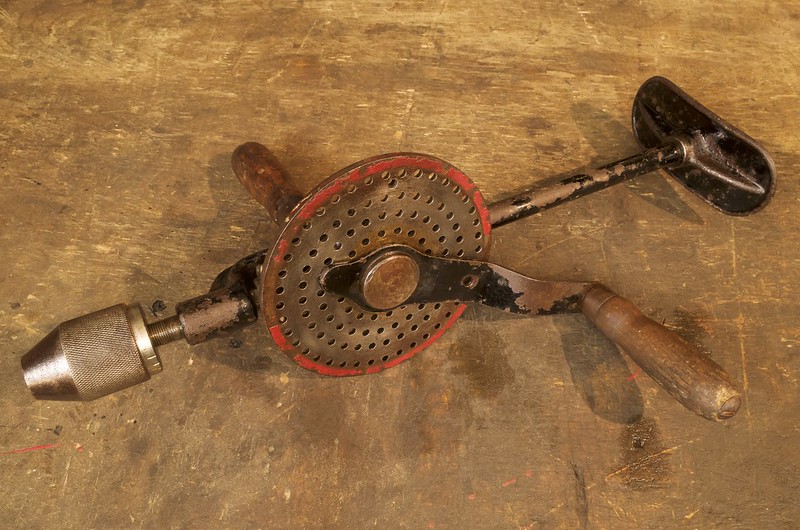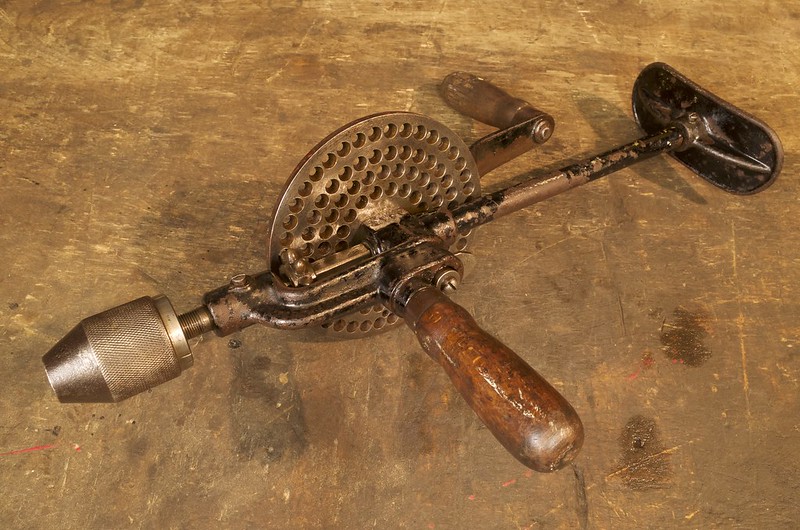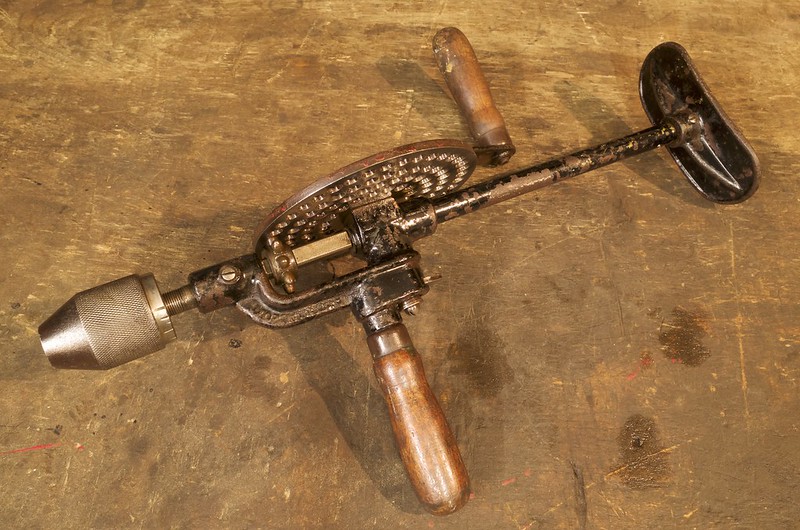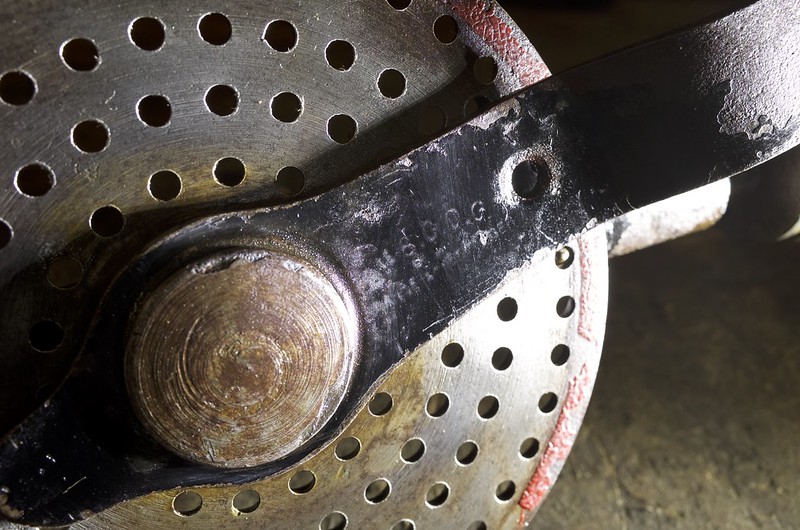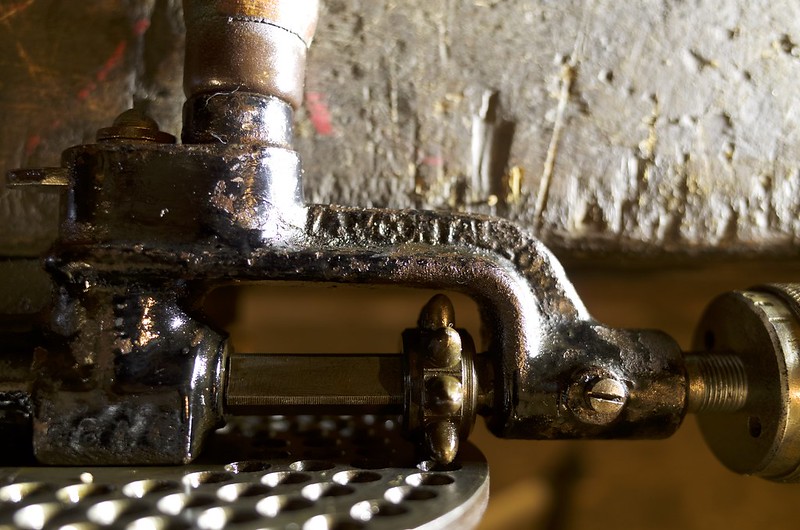Ok, the theme of the month seems to be hand drills, so let's keep it spinning for a bit longer!
I've just invested five pounds on eBay because I thought this drill looked interesting. Nobody else bid, but I just think that's because they didn't appreciate its special qualities. You guys know better.
Here's a general view:

You'll no doubt overlook the state of the handle and finish and focus straight on the unique disk with all those holes in.
They are the mechanism for changing the speed - this, my friends is a four speed drill!
This reverse shot shows how it works.

The holes in the disk mesh with the carefully rounded teeth on the little pinion. This has a square hole which is a sliding fit on the shaft, which is connected to the conventional three jaw chuck.
To change speed, you can release the disk so the teeth don't mesh, then slide the pinion to another position:

To allow the disk to move outwards, its end has a groove which is normally trapped in this gizmo

which slides in the main casting:

As you can see, it's not in brilliant condition, but there is little wear or slop in the bearings, and I think a gentle renovation will get it into working order quite easily. There is no side handle, but the hole is tapped for a standard Whitworth thread, so I will be able to turn one quite easily.
There is no maker's name on it anywhere that I can see at the moment, and I doubt I'll find any.
Has anyone seen one like this? Any catalogue image or idea of a possible date?
It may be a while before I get round to doing anything to it, but I will come back and post some action pics for you all.
I've just invested five pounds on eBay because I thought this drill looked interesting. Nobody else bid, but I just think that's because they didn't appreciate its special qualities. You guys know better.
Here's a general view:

You'll no doubt overlook the state of the handle and finish and focus straight on the unique disk with all those holes in.
They are the mechanism for changing the speed - this, my friends is a four speed drill!
This reverse shot shows how it works.

The holes in the disk mesh with the carefully rounded teeth on the little pinion. This has a square hole which is a sliding fit on the shaft, which is connected to the conventional three jaw chuck.
To change speed, you can release the disk so the teeth don't mesh, then slide the pinion to another position:

To allow the disk to move outwards, its end has a groove which is normally trapped in this gizmo

which slides in the main casting:

As you can see, it's not in brilliant condition, but there is little wear or slop in the bearings, and I think a gentle renovation will get it into working order quite easily. There is no side handle, but the hole is tapped for a standard Whitworth thread, so I will be able to turn one quite easily.
There is no maker's name on it anywhere that I can see at the moment, and I doubt I'll find any.
Has anyone seen one like this? Any catalogue image or idea of a possible date?
It may be a while before I get round to doing anything to it, but I will come back and post some action pics for you all.








































